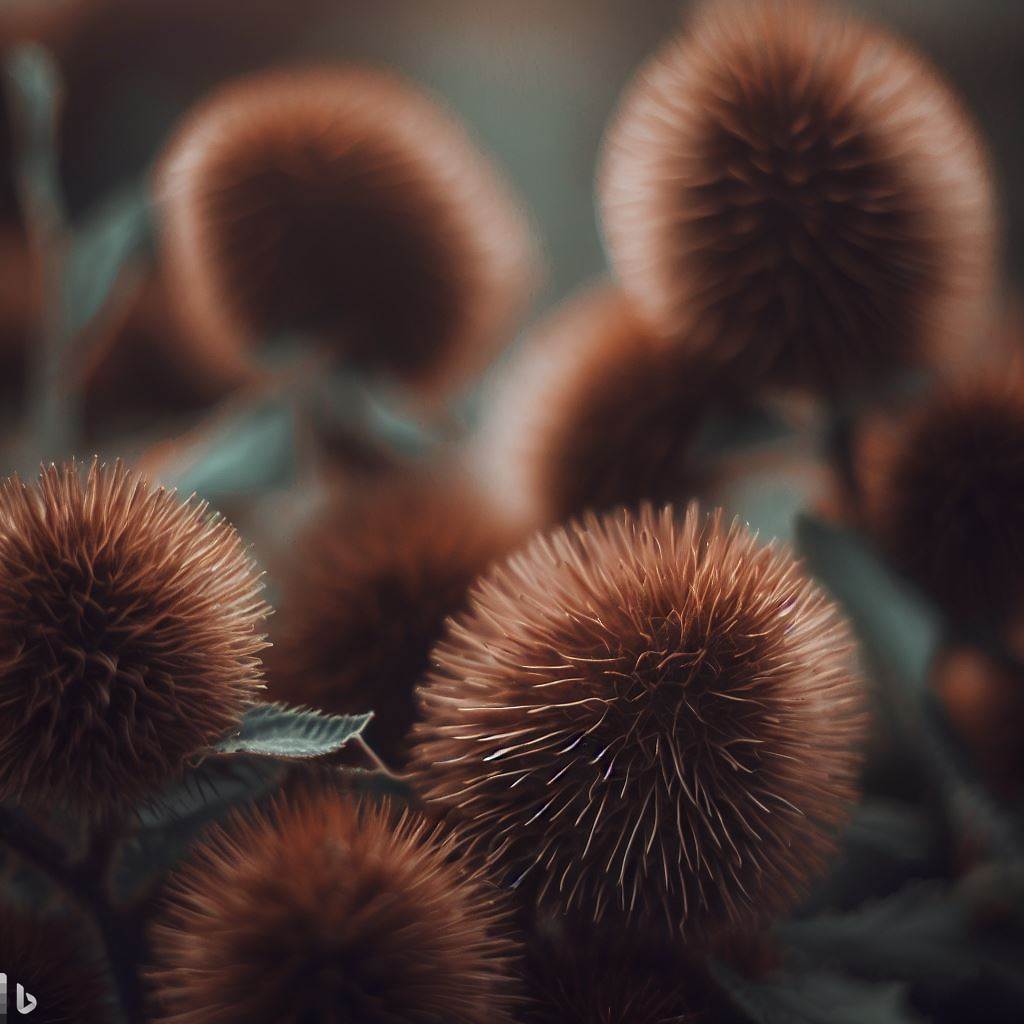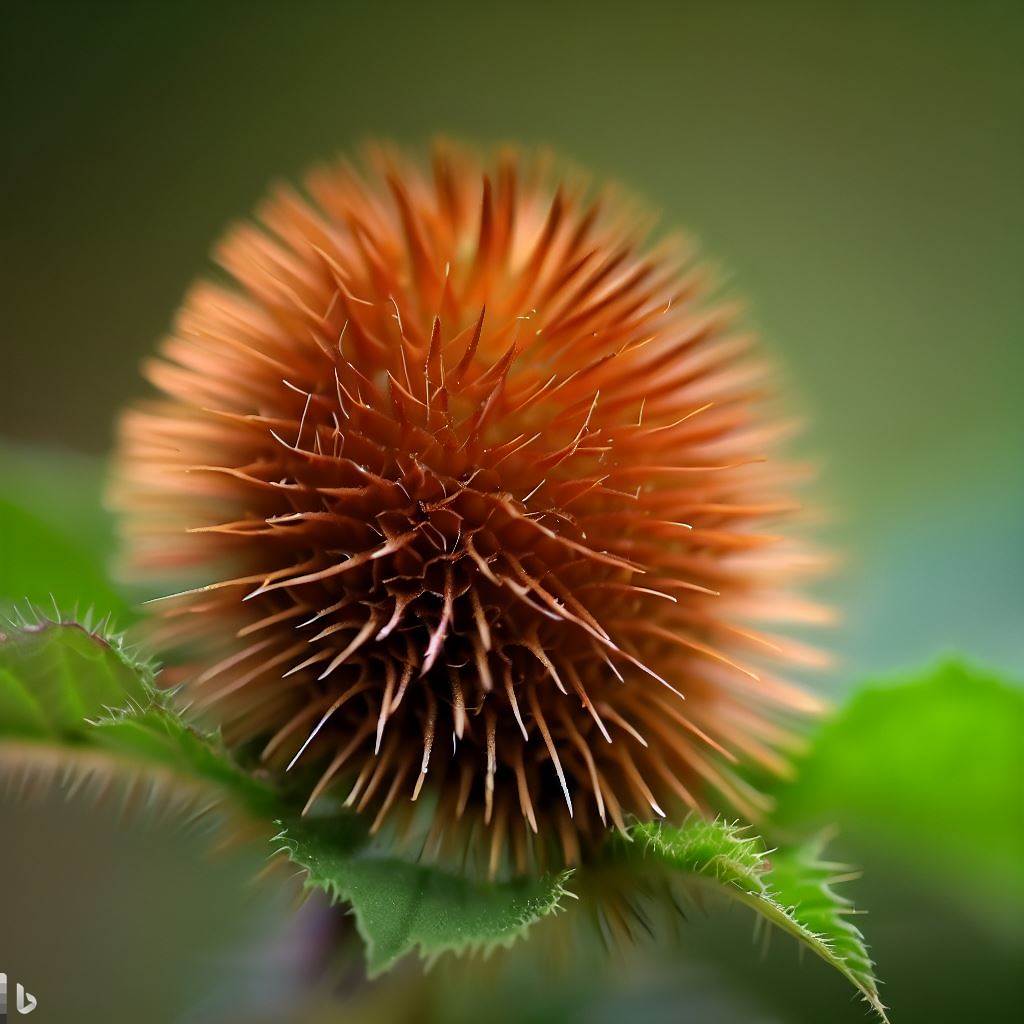Ever stumbled out of the woods, only to find your favorite sweater or hiking pants covered in hitchhiking cockleburs? We’ve all been there. Those prickly little nuisances that latch onto our clothes and refuse to let go without a fight. I know what you’re thinking – How can this bothersome cocklebur on clothes be removed without ruining my clothing?
Well, fear not! You’re about to discover the simple yet effective ways of dealing with those tenacious pests known as cockleburs. With just a few household tools and some patience, you’ll say goodbye to unwanted cling-ons, and hello again to your bur-free attire.

I’ve sunk many hours into researching this topic so that you don’t have too. After being ambushed by an army of cockleburs on more than one occasion (yes, even I fell victim), I felt it was high time we took back control!
We might not be able to stop nature’s most annoying embroidery from attaching itself onto us during our outdoor adventures but armed with knowledge from this article, we can surely beat them at their own game! So buckle up for some wit-laced wisdom that will make those pesky bur removal sessions less tiring and maybe even enjoyable…well almost!
Here is an article you might be interested in commercial squirrel repellent
Here is also another exciting article to read coon feeders ideas
Characteristics of Cocklebur’s Burrs
First things first, let’s understand our enemy – the cocklebur burs themselves. These little troublemakers may look harmless at first glance, but their hooked spines are designed for maximum clinginess.
The burrs consist of tiny barbs that easily latch onto fabric fibers or any other textured surface they encounter along their way. Once attached, they hold on tight, causing headaches for anyone unfortunate enough to cross paths with them.
How Cocklebur Burs Stick to Clothes
Now that we know what we’re up against let’s delve into the science behind how these burs stick so tenaciously to our clothes.
As mentioned earlier, the hooks or barbs on each spine act like velcro when in contact with fabric surfaces. This mechanism enables them to engage in an unyielding embrace with clothing fibers and resist even the slightest attempt at removal.
It’s almost as if these clever burrs have whispered secrets known only by horticultural pickpockets who aimlessly wander around looking for unsuspecting victims like yourself!
Prevention Tips for Avoiding Cockleburs on Your Clothes
They say an ounce of prevention is worth a pound of cure, and when it comes to cockleburs, truer words were never spoken. Here are some practical tips to avoid finding yourself victimized by these opportunistic hitchhikers:
1. Dress Wisely
If you’re planning on venturing into areas where cocklebur plants thrive, consider wearing clothing made from smooth materials like nylon or polyester. These fabrics offer a less textured surface area for the burs to cling onto.
2. Stay on the Beaten Path
Stick to well-traveled trails or paths where cocklebur plants are less likely to reside. Avoiding their territory altogether is your best defense against burr infiltration.
3. Regular Inspections
After spending time outdoors, perform routine checks on your clothing for any potential hitchhikers before stepping foot indoors. This way, you can catch those burrs in action and prevent them from settling in.
Practical Methods to Remove Cockleburs from Clothing
So what do we do if we’ve failed in our quest for prevention? Fear not! We have several tried-and-true methods for removing those stubborn burs from your clothes:
- Start with patience
Take a deep breath and adopt a calm mindset – this battle might take some time but victory awaits you at the end!
- Pre-treat with fabric softener
Apply a small amount of fabric softener directly onto the affected area and allow it to soak in for about 10 minutes before attempting removal.
- Gentle brushing
Use a soft-bristled brush (like an old toothbrush) or even a fine-tooth comb as your first line of attack against these pesky invaders. Gently brush the affected area in one direction without applying too much force.
- Sticky tape method
Wrap sticky tape around your fingers with the adhesive side facing outward, then gently dab at the burrs to lift them off your clothes. This method works particularly well for smaller burrs or hard-to-reach areas.
Impact of Different Types of Fabric on Removing Cocklebur Burs
Now, let’s address the elephant in the laundry room – the impact different fabric types can have on cocklebur removal.
Smooth and tightly woven fabrics like polyester or nylon tend to be more forgiving when it comes to removing burrs. Their sleek surfaces offer fewer potential cling points, making extraction a relatively smoother process. On the other hand, rougher or textured fabrics like wool or corduroy may pose a greater challenge due to their increased surface area for burs to grab onto.
Remember, no matter what fabric you’re dealing with, patience and persistence are key!
Effectiveness of Common Household Tools in Removing Burrs
But wait! What about those trusty household tools that always come to our rescue? Can they help us deal with these pestering cockleburs?
While some common household items might assist in removing burrs from clothing, their effectiveness varies depending on numerous factors such as fabric type and how deeply embedded the burr is. Here are a few examples:
1. Tweezers: A handy tool often found lurking in bathroom cabinets (or at least they should be!). Tweezers can work wonders by providing precise control over individual burr removal.
2. Hairdryer: Believe it or not, heat can be your secret weapon against stubborn cockleburs! Gently heating the affected area using a hairdryer may soften the adhesive properties of the burs, making them easier to brush away.
3 Comb/Brush Duo: When facing an army of tiny burs that seem impossible to remove one by one, employ this dynamic duo! Use a comb first in order to loosen up any tangled fibers around larger clusters before employing your brush for further extraction.

Maintaining Fabric Integrity While Detaching Cockleburs From Clothes
We’ve come to the final stretch in our battle against these prickly adversaries – preserving the integrity of your beloved clothing while detaching cockleburs. After all, we want to ensure our garments survive unscathed!
1. Gentle handling
Treat your clothes with care throughout the removal process. Avoid aggressive tugging or pulling as this may damage fabric fibers and weaken their structure.
2. Spot Test Before Treatment
When using any pre-treatment product like fabric softener, it’s always a good idea to spot-test a small inconspicuous area of your garment first to ensure no adverse effects occur.
3. The Delicate Cycle is Your Friend
If you’re dealing with particularly fragile fabrics or intricate pieces, consider placing them in a mesh laundry bag and running them through a gentle cycle in your washing machine for an extra layer of protection.
In Conclusion
Removing cocklebur from clothes requires careful attention and patience but armed with these proven techniques, you can banish those pesky burrs from your garments once and for all! So go forth fearlessly into meadows and fields knowing that no clingy hitchhiker stands a chance against you and your well-prepared wardrobe!
Read another exciting blog post here crawlspace furnace
This is the article to read for today crawlspace heaters
FAQs
Q: What are burrs and how do they get on our clothes?
A: Burrs are the prickly, seed-bearing pods that cling to the fur of animals or the clothes of humans. They are a defense mechanism for plants to disperse their seeds. Burrs can get on our clothes when we come into contact with plants that produce burrs, such as burdock or foxtail.
Q: Why is it important to remove burrs from clothes?
A: It is important to remove burrs from clothes because they can damage the fabric and also cause irritation or a rash on your skin if left in contact for too long.
Q: What is the best way to remove burrs from clothes?
A: The best way to remove burrs from clothes is by using duct tape. Simply press the sticky side of the duct tape onto the burrs and then peel it off. The burrs should easily come off with the tape.
Q: Can I remove burrs using tweezers?
A: Yes, you can use tweezers to remove burrs from clothes. However, it can be a bit time-consuming if there are many burrs. It is more efficient to use duct tape for removing multiple burrs at once.
Q: Are there any specific tools or products I can use to remove burrs from clothes?
A: Yes, you can invest in a burr removal tool or use a comb or plier to gently remove the burrs from your clothing. These tools are designed to help remove burrs without causing damage to the fabric.
Q: Can I remove burrs by washing clothes in a washing machine?
A: While washing clothes can help remove some burrs, it may not always get rid of all of them. It is recommended to remove as many burrs as possible manually before putting the clothes in the washing machine.
Q: What are some things I should avoid when trying to remove burrs from clothes?
A: When trying to remove burrs from clothes, avoid using a razor or any sharp objects as they can damage the fabric. Also, be careful not to rub or swirl the burrs too vigorously, as it can cause them to stick more firmly.
Q: How can I dispose of the burrs once I have removed them from my clothes?
A: Once you have removed the burrs from your clothes, you can simply pluck them off and dispose of them in the trash or outdoor bin. Make sure to check for any remaining burrs before storing or wearing the clothes again.
Q: Are certain types of clothes more susceptible to burrs than others?
A: Yes, clothes made of materials with a rough texture, such as wool or certain synthetic fabrics, are more likely to attract and retain burrs compared to smooth fabrics like silk or satin.
Q: Is there a way to prevent burrs from getting on my clothes?
A: While it may not be possible to completely prevent burrs from getting on your clothes, you can take some precautions. Avoid walking through areas with known burr-producing plants and try to avoid brushing against them. Wearing protective clothing can also help you avoid contact with burrs.